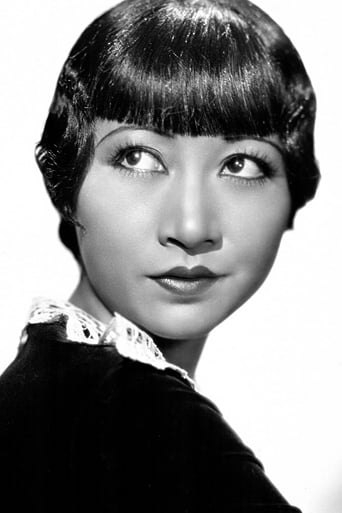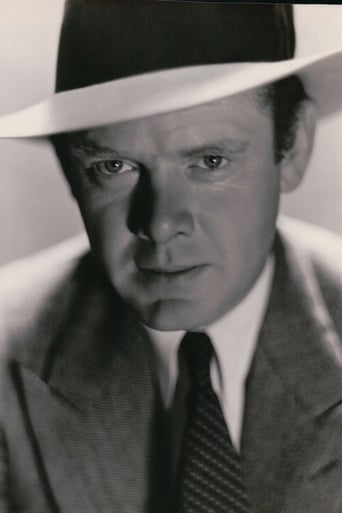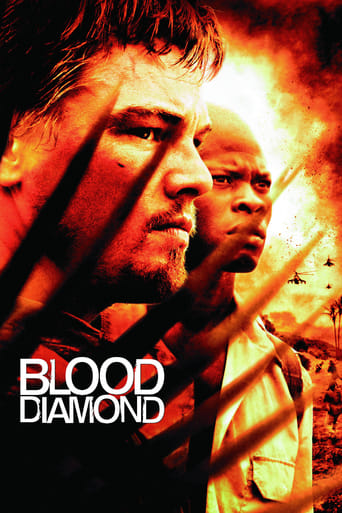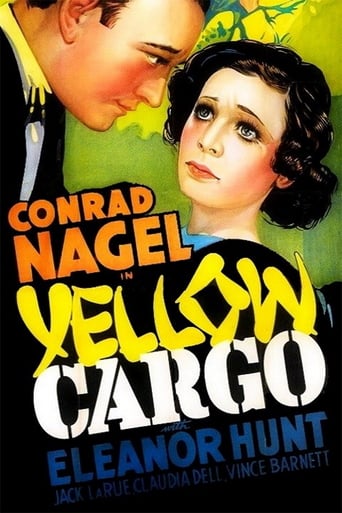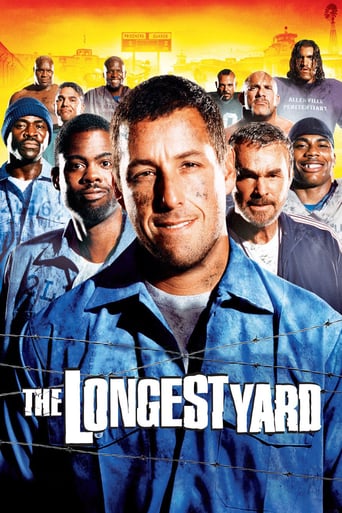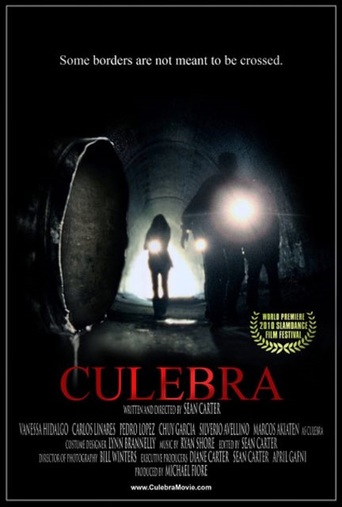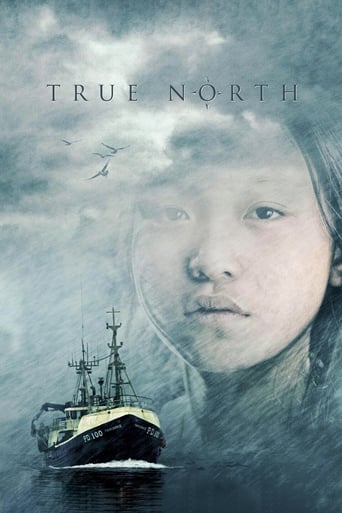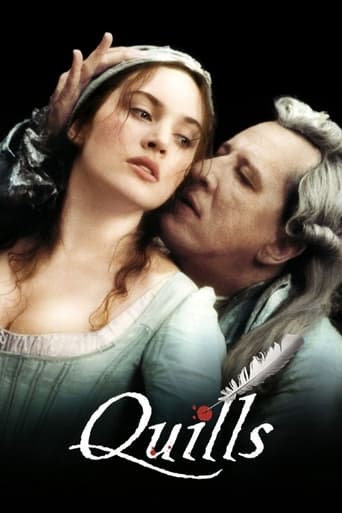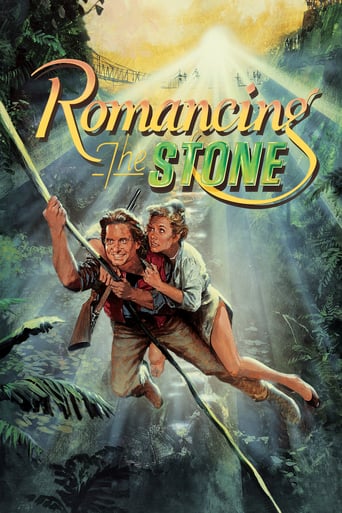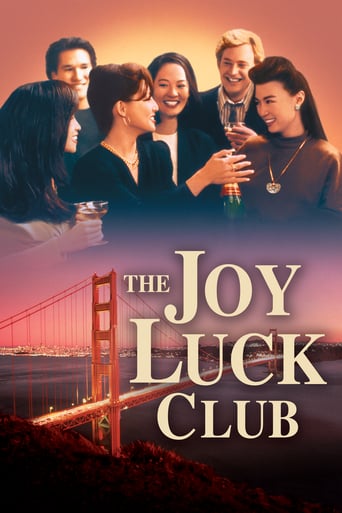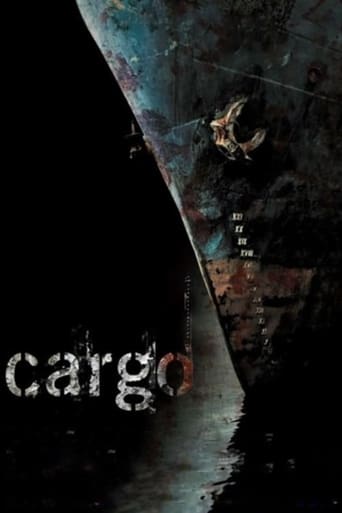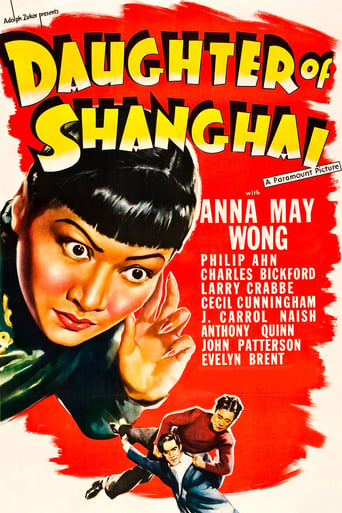
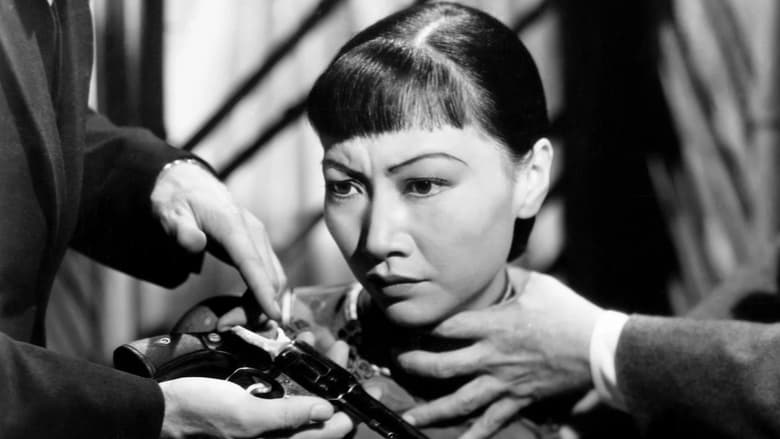
Daughter of Shanghai (1937)
A Chinese-American woman tries to expose an illegal alien smuggling ring.
Watch Trailer
Cast


Similar titles
Reviews
Redundant and unnecessary.
The joyful confection is coated in a sparkly gloss, bright enough to gleam from the darkest, most cynical corners.
A terrific literary drama and character piece that shows how the process of creating art can be seen differently by those doing it and those looking at it from the outside.
It's simply great fun, a winsome film and an occasionally over-the-top luxury fantasy that never flags.
Sometimes it is enough that a film give you an interesting perspective on the times. In that way, what originally was a piece of light fiction becomes instead a documentary. The story here is cobbled together from modules common of the era:Beautiful "girl" goes undercover to avenge murder of her father and has at least one episode of having to be sexy. A pre-noir detective is on the case. Some novel or exotic element from culture or is thrown in. This time it is the smuggling of Asians. Both our beauty and detective are Asian actors.At the end, there is an admiring mention of the brand new social security act.The tone of this is fascinating, a balance of admiration and respect for the Chinese with just enough alien helplessness to color it. (They are saved by a dumb Irishman; dumb as he is, and as reviled as his cohort of immigrants were at the time, he represents here good old American values.)The settings contrast the order of San Francisco to the unruliness of the "Asian seas." The cargo of Chinese sometimes gets tossed into the sea by opening the bomb bay — something then brand new. Movie viewers would be aware of this innovation through newsreels touting the design of what would then be called the Y1B-17, later the B-17.Tossed in: the head of the gang, someone described throughout as mean, cheap and to be feared — is a society matron, and there is a mother-daughter betrayal subtext going on. The matron is "white" of course and early in the film we know she is an avid purchaser of Chinese princess regalia.A brief tour through public interest in weapon design, racial awareness and critical introspection into American values and capitalism. Ted's Evaluation -- 3 of 3: Worth watching.
The great Anna May Wong stars as a Chinese girl who is trying to track down her fathers killers after he is rubbed out for trying to stop the flow of illegal aliens. Wong the only Chinese American to star in films in the 1920's and 1930's. She exudes sensuality and was a damn fine actress to boot. Here she does it all as she goes from San Fransico to South America in trying to reveal the head of the smuggling ring. Its gritty and nasty in surprising ways especially for a code production. The smoldering sexuality of the dive in South America seems to have come from the gritty films of the late 1940's or the precode films of the 1930s. Frankly this is a lost treasure. This is a movie that is perfectly paced to keep you watching with twist and turn and odd twist. Only when a Deus ex Machina shows up towards the end that it shows its programmer heritage. The cast is a who's who of mid-level stars to be in Buster Crabbe, Charles Bickford, J Carol Nash and some Irishman named Anthony Quinn. This is 63 minutes of pure enjoyment. I can't recommend this enough, and while it ain't the best of the best, its near that.
DAUGHTER OF SHANGHAI is unique among 1930s Hollywood features for its portrayal of an Asian-focused theme with two prominent Asian-American performers as leads. This was truly unusual in a time when white actors typically played Asian characters in the cinema. At best, Hollywood assigned some Asian roles to Asian performers and some to whites stars in the same film, with results that seem discordant today even if widely accepted at the time. DAUGHTER OF SHANGHAI was prepared as a vehicle for Anna May Wong, the first Asian-American woman to become a star of the Hollywood cinema. Appearing in some 60 movies during her life, she was a top billed player for over twenty years, working not only in Hollywood, but also in England and Germany. In addition, she was a star of the stage and a frequent guest performer on radio, and would headline the first American television series concentrating on an Asian character, THE GALLERY OF MME. LIU-TSONG (Dumont, 1951).Born in 1905, Wong was the daughter of a Chinese immigrant who ran a Los Angeles laundry. Her Chinese name, Wong Liu Tsong, was Cantonese for Frosted Yellow Willow. A career in the movies began in the typical manner of the time; she saw a local film crew at work and knew at that moment the life she wanted to pursue. She overcame family opposition and by 1922 had played the lead role, a Madame Butterfly-part, in THE TOLL OF THE SEA, the first Technicolor feature. As simultaneously a star, yet one whose roles were necessarily limited, at least in Hollywood's view, by ethnicity, Wong's career oscillated between major roles and character parts or exotic bits in Chinatown or far eastern scenes. Wong embodied a Chinese beauty that was new to Hollywood films and beguiled spectators in Europe and the United States, who accepted her in any type of role, whether playing hero, villain, or victim. The frequency with which portraits and articles about Wong appeared in magazines, despite the many relatively small roles and secondary billing, demonstrated the incredible popularity she had with the mainstream Caucasian audience. Wong was typically described as an intelligent, independent woman whose life was suspended between the two worlds of East and West, invoking the racial mythology of the time. Nonetheless, she frequently found herself losing roles to white performers that should have been hers. The evidence of press coverage strongly suggests that moviegoers had more progressive inclinations than the conservative studio chiefs and producers who made the casting decisions. Wong's star was in the ascendant with the coming of sound, with a number of vehicles written expressly for her. In PICCADILLY (1929), she plays a nightclub vamp. The Sherlock Holmes story A STUDY IN SCARLET (1933) was changed to feature Wong. She appeared in Edgar Wallace's play On the Spot, about a gangster and his Chinese mistress, later filmed as DANGEROUS TO KNOW (1938), a masterpiece largely forgotten because it is out of television circulation and held by only one archive. DAUGHTER OF SHANGHAI was another picture written for her, as Paramount in attempted to revive her star luster in the wake of a well-publicized trip she made to China.No other late Wong movie so strongly situates her at the center of the action as DAUGHTER OF SHANGHAI. She plays a woman attempting to uncover the murderer of her father, in the process exposing racketeers illegally smuggling Chinese aliens into the United States. The whole picture was shot in a month, and suffers from the budgetary limitations along with the use of many thriller clichés. The plot admittedly resembles a screen serial by placing the heroine in a series of perilous predicaments, but this was also one of the few forms available at the time for a woman to display her own courage and self-sufficiency. One of the sequences reveals her dancing skill, which was seen in many of her films, including THE Chinese PARROT (1928) and LIMEHOUSE BLUES (1934). Wong's costar and on-screen romantic interest in DAUGHTER OF SHANGHAI was Philip Ahn. He plays perhaps the first Asian FBI agent seen on the screen, a part all the more interesting since the immigration racket is shown as controlled by Caucasians but broken by members of the very race it exploits. Ahn was the same age as Wong, and they were High School friends, but he had begun his screen career only two years earlier, in 1935. At the last minute, Paramount wisely assigned DAUGHTER OF SHANGHAI to director Robert Florey, a French emigre who was also an enthusiastic devotee of Far Eastern art. Many of his masks, swords, costumes, and furnishings decorate the sets in this picture. Florey had directed in Switzerland, France, Morocco, England, and Germany, and earlier in the same year as DAUGHTER OF SHANGHAI, he had made his second journey to China and Japan. Florey hoped to interest Hollywood in making movies on location, spending several months shooting footage from the streets of Shanghai to the Japanese film studios, and some of that film still survives. He had scripted A STUDY IN SCARLET for Wong in 1932, and he directed her next picture, DANGEROUS TO KNOW. In the four years after DAUGHTER OF SHANGHAI, Wong's career declined once more. During much of the 1930s and into the 1940s she used her name recognition to speak out against Japan's war against her ancestral land and on behalf of Chinese relief. Two 1943 war films for a poverty row studio, BOMBS OVER BURMA and LADY FROM CHUNGKING, depicted the role of the Chinese woman in the conflict. They also marked Wong's last screen appearance as a movie star. Her remaining roles were sporadic over the final fifteen years of her life, and she died at a relatively youthful age, in 1961. Only in recent years has Wong's importance been recognized, and much research is needed into her life and films and those of other Asian pioneers during the Hollywood studio era.
These are indeed heady times for fans of the actress Anna May Wong. Not only are there two (2!) biographies of the woman in recent release, but a documentary of Anna May's life is purportedly in the works, a restored print of Wong's late silent classic "Piccadilly" has just been released, AND, for those lucky of us to live in NYC, an Anna May Wong retrospective has just unreeled in this town's Museum of Modern Art. Although hugely popular in the 1920s and '30s, up until recently Hollywood's first Asian actress of any kind of renown has languished in relative obscurity, known only to fans of old-timey movies...perhaps. When I told some coworkers that I was going to see some Anna May, I half expected them to make some remark about Japanese comics (anime). I have been a fan of Ms. Wong's for many years now, although that fandom has been largely based on just a handful of films, most especially the 1932 von Sternberg classic "Shanghai Express." Her part in this picture is not large, but she makes such a mysterious and exotic impression that that brief performance was enough to make a convert of me. With the exception of the 1949 film noir "Impact" and one or two others, though, it has been extremely hard for fans of this once-famous actress to see her other work. It was therefore with great anticipation that I attended the MoMA's double bill of two of Anna May's rare '30s work: "Dangerous to Know" and "Daughter of Shanghai." The first is a compact little B picture, in which Anna May is the kept mistress of crime boss Akim Tamiroff. It was a lot of fun, and very interesting, but the latter is the one that I really enjoyed. Anna May is without question the star of "DOS," and the picture, although admittedly in the B category, is as fun as can be. In this one, Ms. Wong plays the daughter of a Chinese shop owner in San Francisco. When her dad is killed by alien smugglers who are pressuring him into taking on a load of their human cargo, Anna May goes undercover to track down the bad guys. Her quest takes her to Central America, where she winds up taking a job as a dancer in one of the seediest dives you've ever seen on film. The owner of this joint is Charles Bickford, who is believed to be one of the heads of the smuggling operation. "DOS" features some surprisingly gritty action scenes, and some real cliffhanger moments. Ms. Wong is aided in her quest to smash the alien smugglers by a G-man played by Philip Ahn. I'd never seen Mr. Ahn play a "good guy" before; he was so often cast as a sneaky weasel type. Anyway, he's very effective in the role of Anna May's partner. J. Carrol Naish and Anthony Quinn (in a very early role) are both hissably fun as two of the nasty smugglers. It is really quite remarkable how much story and action are packed into this film's short, 63-minute running time. And for fans of Anna May Wong, the picture is heavenly. What a delight it is to see this charming actress take the lead role in a smashing action picture, and go undercover in that Central American sleazepit. The audience at the MoMA burst into spontaneous applause at the conclusion of this nifty B picture, and that applause was certainly merited. This is one fun hour at the movies!


